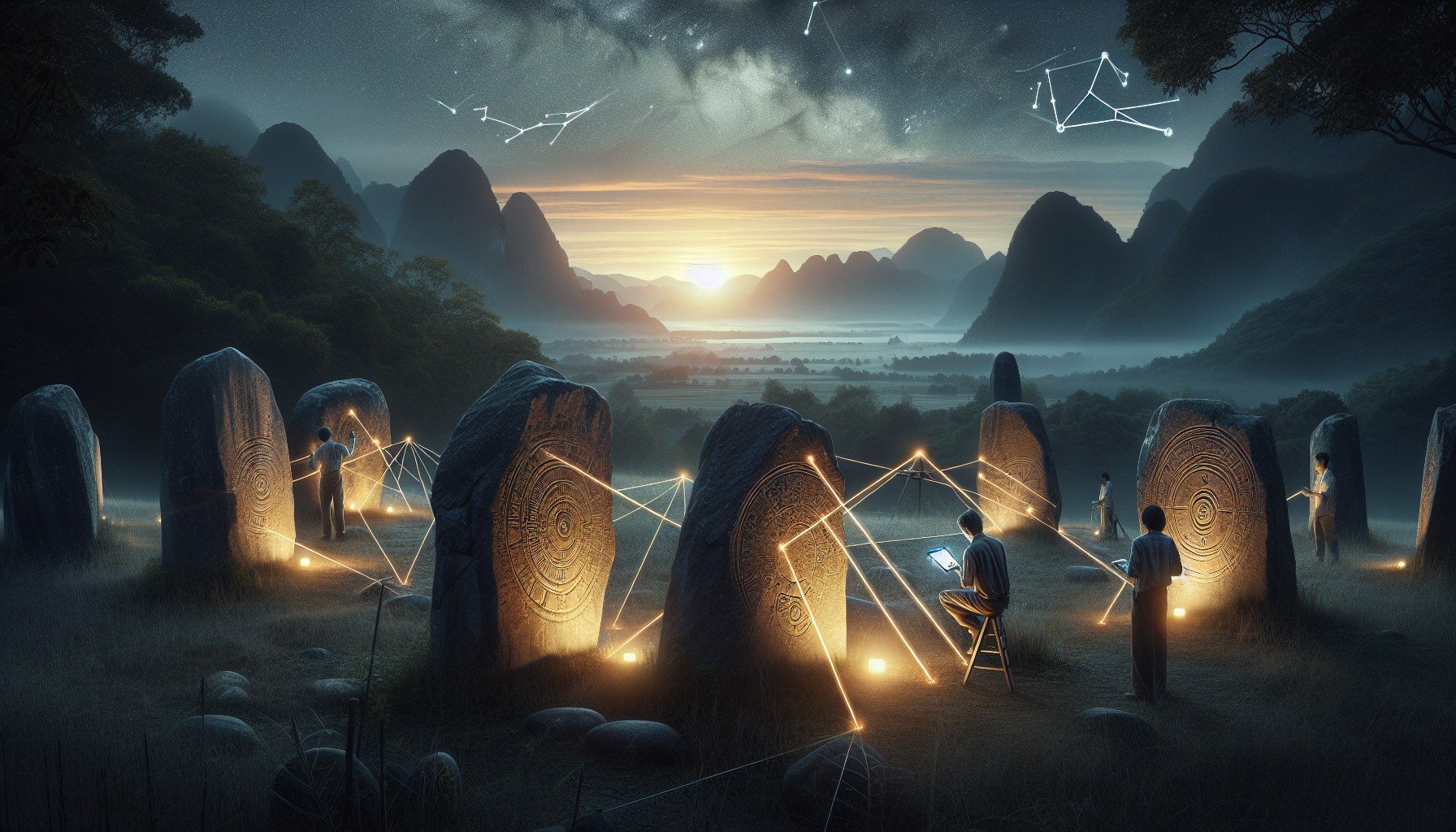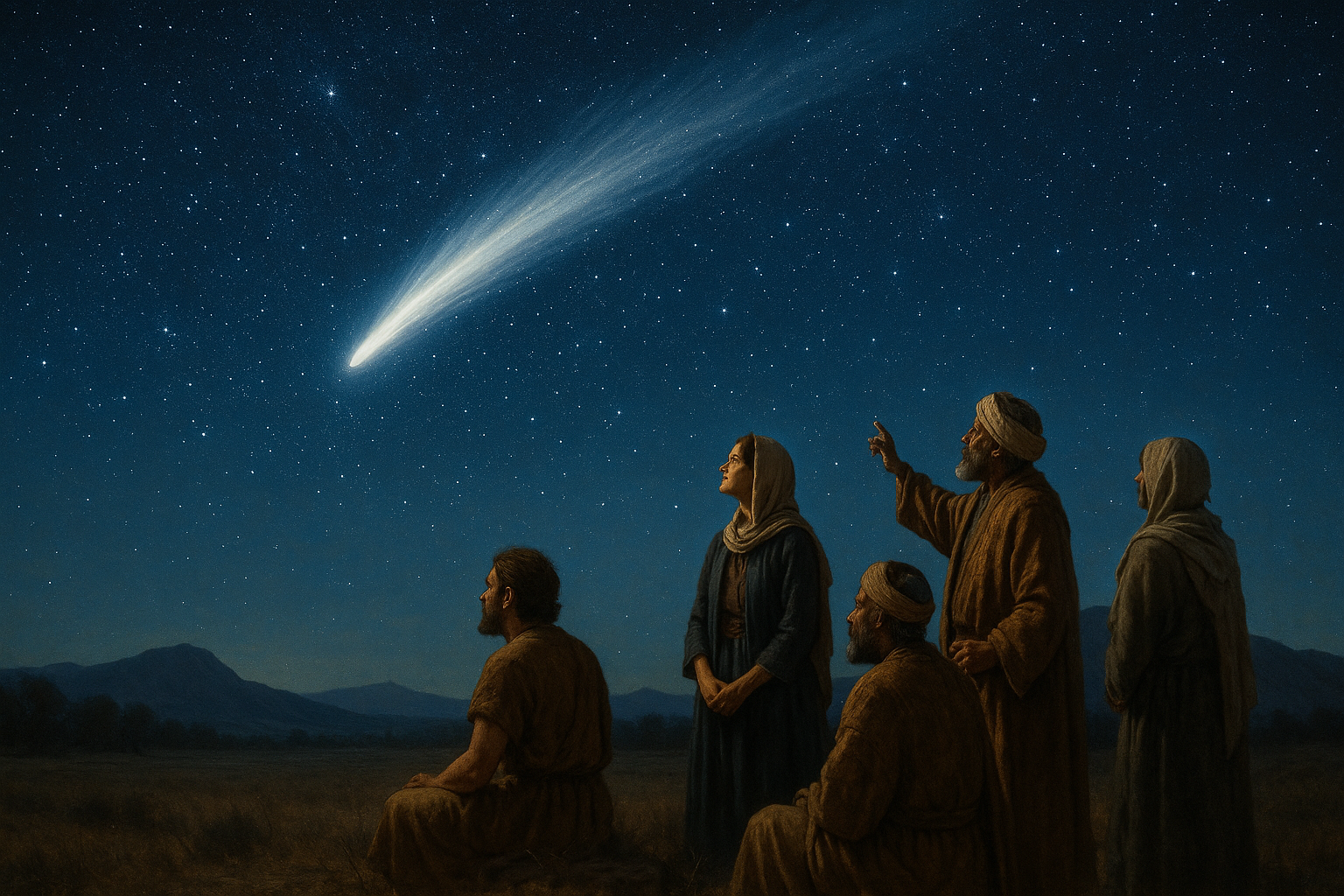For centuries, the silent sentinels of the ancient world—megalithic structures—have sparked awe and curiosity among historians, archaeologists, and astronomers alike. These colossal stone edifices, scattered across the continents, speak a universal language of mystery and wonder, particularly when it comes to their celestial connections. While Europe, with its Stonehenge and Carnac stones, has often dominated the narrative, the vast expanse of Asia holds a treasure trove of megalithic marvels that are equally, if not more, intriguing. Here, amidst the diverse landscapes and rich tapestries of cultures, lie monumental structures that whisper secrets of an ancient understanding of the cosmos. The enigma of these Asian megaliths lies not only in their sheer size and architectural prowess but also in their sophisticated alignments with celestial bodies, suggesting that our ancestors possessed a profound grasp of astronomy, long before the invention of modern instruments. 🌟
As we embark on this journey to unlock the secrets of megalithic astronomy in Asia, we delve into a world where mythology, science, and spirituality converge. How did ancient civilizations, without the aid of telescopes or computers, achieve such precise alignments with stars and planets? What role did these structures play in their societies? Were they mere calendars or observatories, or did they serve a deeper, perhaps spiritual, purpose? In this article, we will explore iconic sites across Asia, such as the awe-inspiring pyramids of Xi’an in China, the enigmatic Yonaguni Monument off the coast of Japan, and the mysterious Nabta Playa stone circle in the Egyptian desert, among others. By examining these sites, we will attempt to piece together the celestial knowledge that these ancient architects might have held, and the significance it had for their cultures.
Join us as we uncover the astronomical alignments that connect these megaliths to the heavens above. We will investigate the latest archaeological discoveries, decode the myths and legends intertwined with these structures, and discuss the cutting-edge technologies that researchers use today to understand their celestial significance. From the alignment of the sun during solstices and equinoxes to the tracking of lunar cycles and even the potential connection to far-off star systems, this exploration promises to reveal the remarkable achievements of our ancestors in mapping the cosmos. Whether you’re a seasoned scholar or a curious novice, this journey through time and space will inspire a newfound appreciation for the celestial ingenuity of ancient civilizations. 🌌
Understanding Megalithic Astronomy
The study of megalithic astronomy involves delving into the ancient practices and knowledge systems of past civilizations, who constructed vast stone structures and alignments. These constructions, known as megaliths, were not merely for shelter or defense. Rather, they often served a more celestial purpose, aligning with astronomical phenomena such as solstices, equinoxes, and the positions of stars and planets. Exploring these ancient alignments provides insight into the sophisticated understanding of astronomy that our ancestors possessed, despite lacking modern technology.
In Asia, several megalithic sites have been identified that showcase the incredible astronomical prowess of ancient cultures. These sites are scattered across various regions, each telling a unique story of human curiosity and the pursuit of cosmic understanding. The intricate alignments and purpose of these structures continue to intrigue scholars, archaeologists, and astronomers alike. This journey through ancient Asia uncovers the secrets of megalithic astronomy and its significance in the broader narrative of human history.
One notable example of megalithic astronomy in Asia is the site of Gunung Padang in Indonesia. This megalithic site is not only one of the largest in Southeast Asia but also one of the oldest. Its terraces and stone structures are believed to align with significant celestial events, suggesting that the builders had a sophisticated understanding of astronomy. By studying these alignments, researchers can uncover information about the calendrical systems and the cosmological beliefs of the civilization that constructed it. The astronomical alignments at Gunung Padang open a window into a time where the sky served as a calendar and guide, emphasizing the cultural importance of celestial events.
Megalithic Structures and Their Celestial Alignments
Throughout Asia, various megalithic structures have been discovered, each with its unique set of celestial alignments. These alignments often correspond to solar and lunar events, such as solstices, equinoxes, and lunar standstills. Such alignments suggest that these sites were used as observatories or ceremonial spaces to track the passage of time and the movements of celestial bodies.
In India, the site of Vedic Aryan observatories demonstrates the fusion of religious and astronomical practices. These ancient sites were constructed to observe solar and lunar cycles, crucial for agricultural and religious purposes. The precise alignments of these structures with celestial events highlight the advanced knowledge of astronomy possessed by the Vedic Aryans. These observatories were not merely functional; they also held significant cultural and spiritual value, serving as centers for astronomical knowledge and religious practices.
Similarly, the megalithic structures in Korea, such as the dolmens, reflect a deep understanding of celestial phenomena. These stone structures, often aligned with solar events, were used for ceremonial purposes and as burial sites. The alignments demonstrate a connection between the living and the celestial world, reflecting the beliefs and cosmology of ancient Korean societies. The careful placement of these stones indicates a sophisticated knowledge of astronomy and the importance placed on celestial events in societal and religious contexts.
| Region | Megalithic Site | Key Celestial Alignment |
|---|---|---|
| Indonesia | Gunung Padang | Solstices and Equinoxes |
| India | Vedic Aryan Observatories | Solar and Lunar Cycles |
| Korea | Dolmens | Solar Alignments |
For a visual exploration of these structures, check out this video on ancient astronomical sites in Asia.
The Cultural Significance of Celestial Alignments
The study of megalithic astronomy is not just about understanding ancient astronomical techniques; it also offers insights into the cultural and spiritual lives of past civilizations. These alignments were not arbitrary but were deeply embedded in the social and religious fabric of the communities that built them. The precise orientation of these structures reveals the cultural significance placed on celestial events, which often served as markers for religious festivals, agricultural cycles, and social gatherings.
In many Asian cultures, celestial events such as the solstice and equinox were celebrated with rituals and ceremonies. The construction of megalithic sites aligned with these events underscores their importance in the agricultural calendar and religious life. The alignments served as a cosmic clock, guiding the activities and beliefs of the community. These structures acted as a bridge between the earthly and celestial realms, highlighting the interconnectedness of the cosmos and human existence.
Moreover, the construction of these sites required significant social organization and cooperation. The effort involved in transporting and aligning massive stones demonstrates the communal effort and the cultural importance of these structures. The labor and resources dedicated to building these sites highlight their role as centers of social and religious activity, reflecting the values and priorities of the society that constructed them.
The Role of Astronomy in Ancient Societies
Astronomy played a crucial role in the development of ancient societies, influencing everything from agriculture to architecture. The study of celestial bodies provided a framework for understanding the passage of time and the changing seasons, essential for successful agricultural practices. This knowledge was passed down through generations, becoming an integral part of the cultural and religious identity of these societies.
- Agriculture: Understanding celestial cycles was crucial for planting and harvesting crops.
- Religious Practices: Celestial events were often associated with deities and religious ceremonies.
- Social Organization: The construction of megalithic structures required community cooperation and planning.
By exploring the astronomical alignments of megalithic sites, we gain a deeper understanding of the sophisticated knowledge systems of ancient civilizations and their enduring legacy in human history.

Conclusion
Unlocking the secrets of megalithic astronomy offers us a fascinating glimpse into the sophisticated understanding of the cosmos that ancient civilizations possessed. Throughout this article, we have delved into the mesmerizing world of megalithic structures across Asia, examining how these ancient sites were not only architectural marvels but also celestial observatories that played a crucial role in the lives of our ancestors.
We began by exploring the historical context of megalithic structures, understanding their significance and the technological prowess required to construct them. These stone structures, scattered across Asia, are more than mere remnants of the past; they are testament to the advanced astronomical knowledge possessed by ancient cultures. We highlighted the importance of celestial alignments, which allowed these societies to track the movements of celestial bodies and mark significant seasonal changes. This ability was not only critical for agricultural purposes but also held spiritual and cultural significance, influencing rituals and societal norms.
We then ventured into specific examples of megalithic sites in Asia, such as the awe-inspiring Nabta Playa in Egypt, the intricate stone arrangements in Nabta Playa, and the remarkable Ratu Boko temple in Indonesia. Each of these sites reveals unique insights into how different cultures approached the study of the heavens. The precise alignments and orientations of these structures underscore the meticulous planning and astronomical expertise that ancient builders employed.
Moreover, we examined the tools and methodologies used by these civilizations to achieve such precision. From simple observational techniques to more complex instruments, our ancestors were able to chart celestial events with astonishing accuracy. This aspect of megalithic astronomy reflects a deep-seated understanding of the cosmos, where the sky was seen not just as a physical realm but as a source of divine inspiration and guidance.
In discussing the implications of these discoveries, we emphasized the profound impact that understanding celestial alignments has on modern archaeology and anthropology. By deciphering these ancient astronomical codes, we can gain invaluable insights into the cultural, religious, and societal practices of early civilizations. It also challenges modern perceptions of ancient peoples, urging us to reevaluate their intellectual and scientific capabilities.
The study of megalithic astronomy also serves as a reminder of our intrinsic connection to the cosmos. In today’s fast-paced, technologically-driven world, it’s easy to lose sight of the natural rhythms that governed the lives of our ancestors. By appreciating their sophisticated understanding of the stars, we are encouraged to foster a deeper connection with the universe and reflect on how these ancient practices can inspire contemporary approaches to sustainability and harmony with nature.
In conclusion, the exploration of ancient celestial alignments in Asia not only enriches our understanding of past civilizations but also inspires a renewed appreciation for the wonders of the universe. It reminds us of the shared human quest to comprehend our place in the cosmos, a quest that transcends time and geography. As we continue to unlock the secrets of megalithic astronomy, let us carry forward the spirit of curiosity and wonder that drove our ancestors to gaze at the stars and find meaning in their patterns.
We invite you to join the conversation—share your thoughts, insights, or personal experiences related to this fascinating topic. How do you see the influence of ancient astronomical knowledge in today’s world? What other mysteries of the past intrigue you? Feel free to comment below or share this article with others who might be inspired by the ancient wisdom of the stars. Together, let’s keep the dialogue alive and continue exploring the celestial secrets that have fascinated humanity for millennia. 🌌✨
Toni Santos is a visual storyteller and cosmic interpreter whose work illuminates the ancient skywatchers and their prehistoric astronomy—the profound ways early humans observed and revered the heavens before written history. Through a visionary lens, Toni explores how the stars, planets, and celestial cycles shaped myth, ritual, and survival in cultures lost to time.
Rooted in a fascination with archaic observatories, stone alignments, and celestial symbolism, Toni’s creative journey reveals the deep human impulse to understand and harmonize with the cosmos. From lunar phases guiding planting seasons to the sacred paths of the Milky Way, each of his works embodies the awe and knowledge encoded in the night sky.
Combining artistic craftsmanship with archaeological insight, Toni’s pieces evoke the mystery and precision of prehistoric astronomers. His work does more than depict—it channels the timeless dance between earth and sky, bridging ancient wisdom with contemporary wonder.
As the visionary behind Vizovex, Toni shares curated visuals, essays, and symbolic studies that invite others to reconnect with the cosmic heritage written in stone and starlight. His creations are a call to look upward, to listen to the silent stories told by the stars, and to honor the first astronomers who mapped the heavens with reverence and ingenuity.
His work is a tribute to:
The celestial wisdom of prehistoric peoples
The sacred geometry of ancient observatories
The enduring bond between human culture and the cosmos
Whether you’re a stargazer, a scholar of ancient mysteries, or someone captivated by the universe’s earliest storytellers, Toni welcomes you to journey through a space where the sky is both map and myth—one constellation, one ritual, one revelation at a time.




